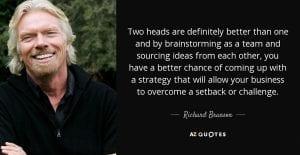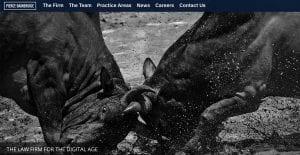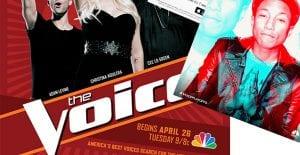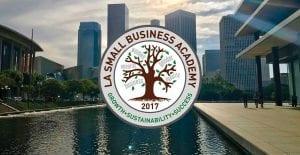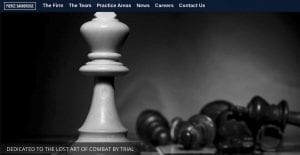For every generation, there’s a counter-generation and the up and coming Gen Z is shaping up to be an interesting challenger to the Millennial mindset marketers have been trying to crack for the past decade.
For years, brands and products have been focusing their efforts on trying to figure out the Millennial. A generation with a way of thinking so pragmatic that we know recognize a transitional age in between them and their predecessor Gen-X. I would know, as I’m part of that bridge generation, the Xennials. For the past decade, it’s been the task of my age to pave the way for the transition, at this point complete, from one generation to the next.
To Gen-X’rs, the Millennials are conceited, they expect everything handed to them, and assume that they deserve everything. They challenge norms, administrative structures and unofficial rules set by the previous generations to keep the established order of things. It is a generation that does not understand what Gen-X’rs had to go through in order to achieve what they achieved in areas like human rights, equality, and freedom.
On the other side, for Millennials, Gen-X represents a repressive past, full of unnecessary intricacies. Complications they see as an unbelievable reality, to have been a people who reflected inequality, gender fixation, and war. As a generation of information, the Millennial is misunderstood by Gen-X. The generation that only looks forward, without regard for the past and that has paved their own way and created their own structures and norms.
Years ago, Gen-X gave up the uphill battle of trying to understand the Millennial. Evidence of this is in the number of young executives at top posts of Fortune 50 companies. These Millennials were hired to make decisions based on their wit vs. making them on the hard-earned knowledge and experience of the Gen-X. Now, after the dust has settled, the Millennial shows proof that not all norms of old were effective and that their own structures were sustainable enough to drive the evolution of our concept of work and balance. They built their own world and developed their own rules, some of which shook up long-standing industries to their core.
In Entertainment, for example, the Millennial challenged music, television, and film. All three have now evolved and continue to develop beyond recognition of what they were during the Gen-X years. This generation questioned everything from education to transportation. We now truly live in their world, with the Gen-X methods just being a distant memory left for the record books. Sadly, it seems the only category the Millennial seems to have forgotten to revolutionize is politics.
Enter Gen Z, the largest and most ethnically diverse generation in American history. A silent counter-revolution to the Millennial; these technology addicted social warriors are now entering their late teens. As we’ve shifted our focus to them, we’ve only begun as a society to understand the value of these Culture Creators, which is truly the best name I’ve found thus far for this generation. As it shapes up to be one of the most impactful generations thus far, it is already demanding a shift in focus by current products and brands. It is time, if you haven’t already, to focus your brand strategy on them. Why? Let’s begin with the basics. First, the fact that Gen Z will comprise 32 percent of the global population of 7.7 billion in 2019, surpassing the Millennials, which will now account for a 31.5 percent share. They also spend $29 -$143 billion of which $44 billion is spent on themselves.
Gen Z is a generation that gorges on information and uses it to make informed decisions with no regard for established norms or patterns, almost as if they never existed. It is essentially as if Gen-X and the Millennials had a baby, with features, both positive and negative of each other but following neither. I’ve also heard it called “The Founders”, as it relates to a new foundation, a new start.
How this will translate to the world of brands and products is something we’re starting to see and are already identifying indicators based on Gen Z’s preferences.
Gen Z is an increasingly socially conscious generation, unafraid to hold marches that rival those of the 70’s. They’re also not afraid to use the technology they grew up with to enact change. A generation is willing to hold brands responsible for their alignment to causes. Furthermore, they expect them to take a stand.
“In the past, brands might have considered playing it safe for fear of alienating some of its customer base,” Calise told Business Insider. “But in today’s social and political climate, it’s arguably riskier not to take a risk – even if it’s a calculated one – when it comes to brands taking stands.”
From Bobby Calise, vice president of Ybrands, “Generation Zs reveal their 100 favorite brands“, Business Insider, Sep 16th, 2018
It’s also the generation of Amazon, where they don’t need an app to tell them whether an article at a brick-and-mortar is cheaper online, they expect immediate availability of products from A to Z and will not wait for more than a Prime to receive their prized goods. A generation where speed and alignment are of the essence.
Gen Z grew up with influencers and YouTube; whereas Millennials saw the advent of digital video and the mobile economy. They see influencers as their friends, cohorts more so than how Gen X saw TV stars or Millennials saw Vine’rs. For Gen Z, where word-of-mouth amongst friends once stood; now stands the world of influence.
A case study of the importance of brand alignment to this generation is EOS, which has been very successful at aligning with influencers within the Gen Z community that reflect the values of their brand. Their efforts have changed the beauty aisle and their partnerships have succeeded at driving their brand alignment. EOS has been able to tune their marketing to incorporate vs. rely on influencers. The results have been a disruption to the beauty industry.
Gen Z also tends to like brands that were once dear to the Gen-X, like the Pillsbury Toaster Strudel, but they want them to experiment with new options that refresh them like the Toaster Scramble, a protein-packed solution to breakfast. From doing something healthy to something extreme, gone are the days when merely slapping a “Flaming Hot” or an “Extreme Lime” label on a goodie was enough to entice a purchase.
Microsoft is looked at as an innovator (what is this 1984?), although Apple products are by far preferred (94% of teens have an iPhone). The time when owning an Android, a mark of the Millennial’s rebellious nature, technical know-it-all and feature-focused mentality seems to have passed, at least in the US market.
During the Millennial generation, there was an underestimation of the shift coming to entertainment. An unfounded fear that TV would disappear, but that was a misunderstanding of what TV truly stood for. With Gen Z we see the honesty behind the shift, and while TV shows are by far not disappearing, the concept of “cable” has. While there’s still some resistance pods within the industry, if the reported 2% adoption rate of cable amongst Gen Z is true, then it’ll also become a harsh reality for operators. The same goes for the fact that only 3% of them say that watching traditional television is one of their activities while 62% say they are watching Netflix on other devices.
Now, remember how I mentioned earlier that the Millennials forgot to revolutionize politics? To Gen Z politics have become the second most significant concern of their generation. From gun-control to climate change, these social warriors are in tune with who is aligned with what and have developed the tools to track these alignments. As this begins to reflect at the polls, we’ll see the politics of old become the revolution of the new.
“The biggest hurdle for my generation will be the environment and the polarization of political parties currently. By environment, I mean my generation will be confronted with figuring out how to do their part to make positive changes in protecting the environment and science in general. In terms of polarized political parties, my generation will have to navigate a world that is trying to be black and white, but really has so much gray area.” — 19-year-old
From the article “Gen Zs never watch TV, are stressed about Snapchat, and are concerned that technology has ruined their mental health — here’s what it’s REALLY like to be a teen in 2018“, Rachel Premack, Business Insider, Jun. 29, 2018

